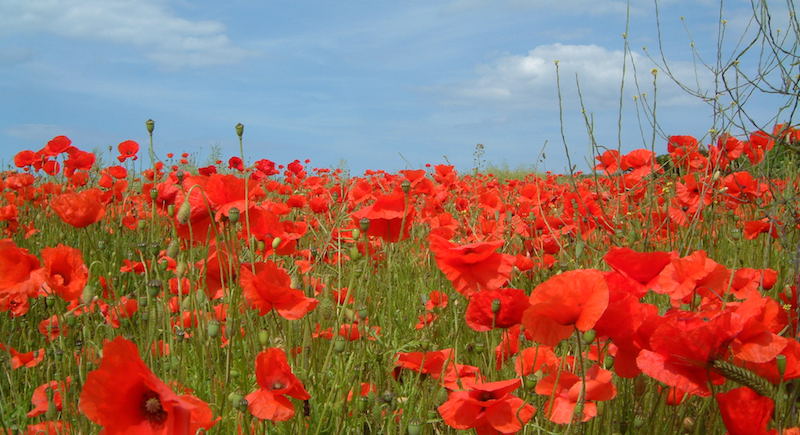The Symbolic Significance of ANZAC Day Poppies: A Parent’s Guide
Hey there, amazing parents! ? Are you eager to teach your kiddos about the profound significance of ANZAC Day and the iconic poppy flower symbol? You’ve clicked on the right page! ANZAC Day is one of the most important national occasions in Australia and New Zealand, marking a day of remembrance for those who served and sacrificed their lives in wars and conflicts around the world. This article will serve as your cheerful guide to understanding ANZAC Day poppies and how to engage your family in this day of commemoration. Let’s dive in and bloom with knowledge!
What is ANZAC Day?
ANZAC Day, observed on April 25th each year, is a day of remembrance in Australia and New Zealand. It honors the members of the Australian and New Zealand Army Corps (ANZAC) who fought at Gallipoli against the Ottoman Empire during World War I. Over time, the day has grown to commemorate all Australians and New Zealanders “who served and died in all wars, conflicts, and peacekeeping operations.” It’s a day of national pride, reflection, and gratitude for the freedoms and peace we enjoy, thanks to the bravery of those who have served.
Why Poppies?
The red poppy has become a symbol of war remembrance the world over and is especially poignant in ANZAC commemorations. But you might wonder, why poppies? After World War I, the battle-ravaged fields of France and Belgium saw an abundance of these red flowers blooming around the soldiers’ graves—in places where nothing else would grow. This striking image was immortalized in the war poem “In Flanders Fields” by Canadian Lieutenant Colonel John McCrae. Ever since, the poppy has served as a living tribute to the fallen and a symbol of hope and renewal amidst the loss.
Teaching Children About ANZAC Day and Poppies
As parents, it’s important to educate our children about the values of courage, sacrifice, and respect for those who have served our country. ANZAC Day provides an ideal opportunity for a history lesson infused with values and remembrance. Here are some tips on how to approach this sensitive subject and make it more understandable for little minds:
- Start with Storytelling: Share age-appropriate stories about ANZAC Day heroes or read books dedicated to young readers that touch upon the subject of remembrance and service.
- Create Poppy Art: Engage in arts and crafts by making paper poppies. This activity not only fosters creativity but also opens up discussion about what the poppies represent.
- Attend Commemorations: Take your children to local ANZAC Day events such as dawn services or parades. The somber yet communal atmosphere can leave a lasting impression and evoke curiosity and respect for the tradition.
- Encourage Questions: Kids are naturally curious, and their questions can lead to deep and meaningful conversations. Don’t shy away from their inquiries, but be mindful of their age and sensitivity to the subject matter.
- Use Technology: For tech-savvy kids, interactive websites and virtual museum tours can be an engaging way to learn about ANZAC history and the significance of the poppies.
Remembering the fallen and understanding the legacy of service and sacrifice is a vital part of our culture. As such, educating the younger generation through the symbol of the ANZAC poppy can instill a sense of honor and respect for those who have served. So, grab your art supplies, your listening ears, and your walking shoes, and get ready to embark on a journey of remembrance and education with your young ones! Stay tuned for more tips on embracing the ANZAC spirit as a family.
There’s so much to explore when it comes to ANZAC Day and the poignant symbol of the poppy. By guiding our kids with love and insights, we can help them understand the sacrifices made for freedom and peace. Let us nurture the roots of remembrance in their young hearts, for they are the future keepers of our history and traditions.

Five Things Parents Should Know in Preparing for ANZAC Day Poppies
As ANZAC Day approaches, it’s a great time to prepare and plan how you’ll share this significant day with your children. Here are five helpful things to keep in mind:
1. Poppy Etiquette
Understanding and conveying the proper etiquette surrounding the wearing of poppies can be a part of educating your children about ANZAC Day. Traditionally, poppies should be worn on the left side, over the heart, or on the left lapel of a jacket. They are typically worn in the leading up to ANZAC Day and sometimes on Remembrance Day as well.
2. Poppy Procurement
Poppies are often available for purchase from veterans’ associations, such as the Returned and Services League (RSL) in Australia or the Royal New Zealand Returned and Services Association (RSA). Buying these poppies supports these organizations and the veterans they assist. It can be a great way to contribute to the community and demonstrate support to those who have served.
3. ANZAC Day Recipes
ANZAC biscuits are a delicious way to mark the day. These sweet treats have a historical connection to the ANZACs and are said to have been sent by wives and women’s groups to the soldiers abroad because they kept well during naval transportation. Baking these with your children can be a fun and educational activity.
4. Local Events and Traditions
Familiarize yourself with local ANZAC Day events such as dawn services, marches, and ceremonies. Each community often has its own traditions and participating or attending these events can help to provide a tangible sense of the day’s meaning. Check local council websites or community boards for details.
5. Reflective Activities
Consider incorporating reflective activities into the day, such as a moment of silence during the dawn service or at home, visiting war memorials, or watching historical documentaries suited to your child’s age. These moments of reflection help children understand the solemnity of the day and the reason behind the poppies.
Engaging with ANZAC Day in a way that’s suitable for children allows them to connect with their nation’s history on a personal level. Moreover, the activities you choose to participate in can help create a tradition within your family of honoring and remembering those who have made the ultimate sacrifice for their country.
Exploring the Rich History of ANZAC Day
Embracing ANZAC Day goes beyond just wearing a poppy; it’s about understanding the history behind it. Encourage your kids to explore the stories of bravery and comradery among the ANZAC troops, learn about the conditions they faced, and understand the impact their actions have had on the shaping of our nations. Museums, documentaries, and even a personal ancestry search for relatives who served can add a deeply personal element to this history lesson.
Conclusion
ANZAC Day is a chance to impart important values and history to our children. With these tips and activities, you can create a meaningful and educational experience that honors those who have served. So let’s wear our poppies with pride, engage in reflective conversations, and pass down the spirit and significance of ANZAC Day to our young ones.
For more great articles please see here. For more information see here
Disclaimer
The articles available via our website provide general information only and we strongly urge readers to exercise caution and conduct their own thorough research and fact-checking. The information presented should not be taken as absolute truth, and, to the maximum extent permitted by law, we will not be held liable for any inaccuracies or errors in the content. It is essential for individuals to independently verify and validate the information before making any decisions or taking any actions based on the articles.




